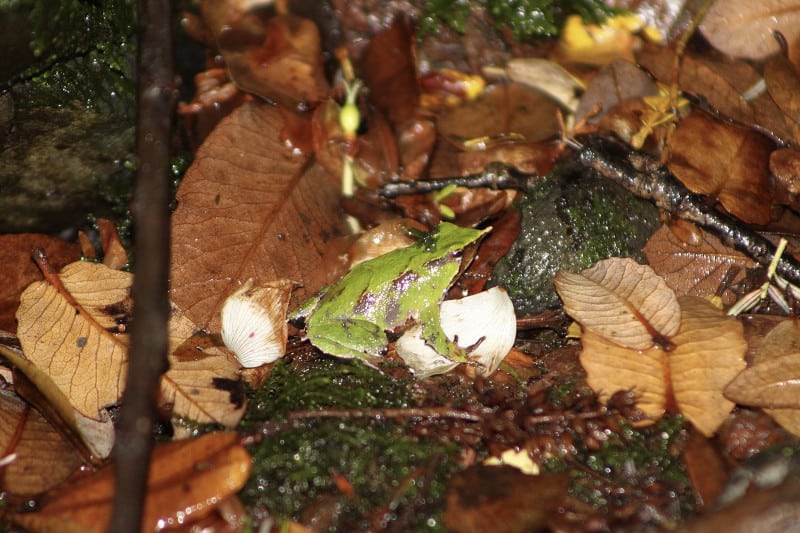
Southern Darwin’s Frog Facts
- This remarkable wonder of Nature and evolution most frequently goes by the common name of the Southern Darwin’s Frog. It also holds that particular moniker for interesting reasons. For the moment, though, it has no other widely accepted name.
- Among scientists, however, it’s better known by another title. That’s the formal, technical name for the amazing species. Like many creatures known to science, though, that’s somewhat hard to pronounce. It holds the formal name of Rhinoderma darwinii.
- It received that tongue-twisting name due to a combination of efforts. The highly esteemed English naturalist, Charles Darwin, discovered it in 1841. French zoologist, André Marie Constant Duméril and his assistant, Gabriel Bibron named it, though.
- Regardless of which term one chooses to use, it’s an intriguing animal. It evolved a trait that possibly makes it utterly unique. A genetic cousin shared the trait, but’s believed extinct. Males of the species carry the tadpoles within the vocal sac, under their throat!
- Sadly, though, the population base of the remarkable Southern Darwin’s Frog is now declining rapidly. This unfortunate situation also seems to hold true throughout the entirety of its known range. The IUCN, therefore, now lists the animal as Endangered.
- The distinctive fauna faces numerous threats to its continued existence. Many of these stem directly from the actions of man. Habitat loss and degradation due to human expansion currently endanger it. It also faces the danger of ongoing climate change.
Related Articles
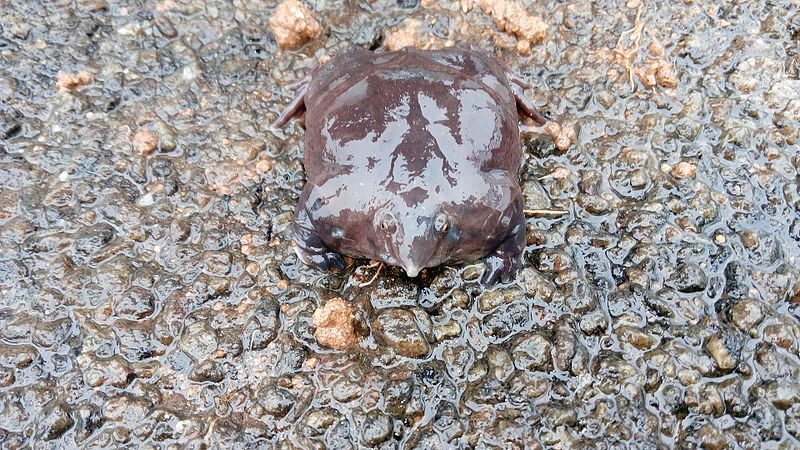
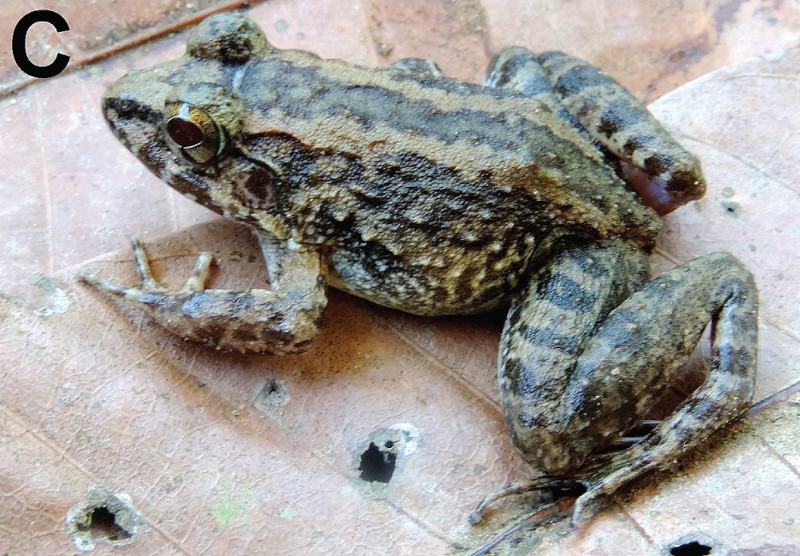
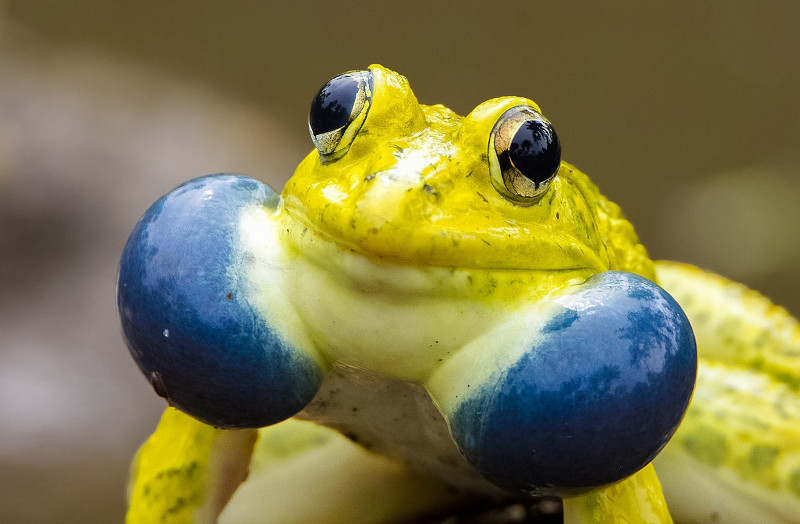
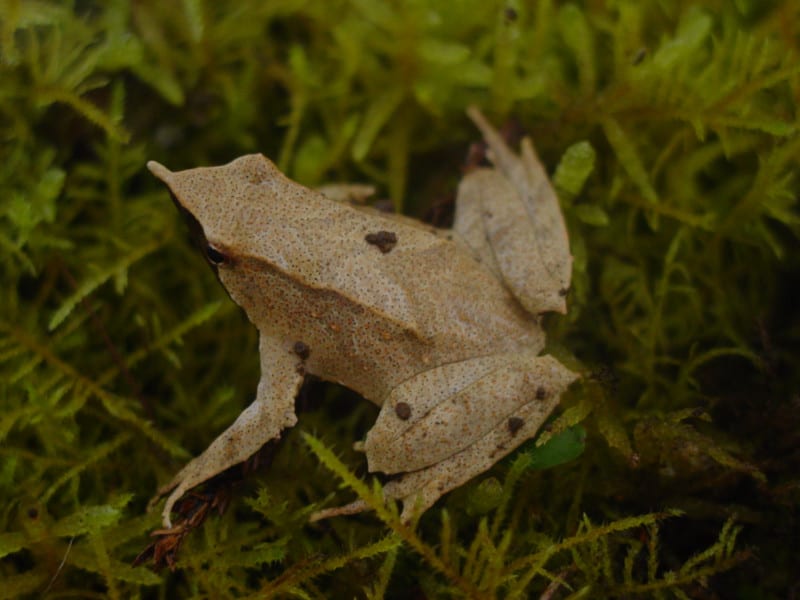
Southern Darwin’s Frog Physical Description
The stunning Southern Darwin’s Frog fascinates those who encounter it. The animal does so, however, for reasons beyond its unique pattern of brooding behavior. That’s true since this marvel of Nature intrigues one due to its sheer physical appearance, as well.
Like many of its relatives, it also displays a moderate degree of sexual dimorphism. In its specific case, this physiological trait manifests itself in terms of appearance, rather than simple size. Individuals of both genders attain roughly the same physical measurements.
Despite its other unique attributes, it remains a small variety of frog. Specimens of both sexes reach an average body length ranging from only 0.9 – 1.2 in (2.2 – 3.1 cm). This includes the snout, which also has an unusual feature. It’s elongated into a fleshy proboscis.
Compared to similar creatures, its legs evolved as comparatively slender and long. Among the studied examples, its front feet display no sign of webbing. Yet, most individuals of the species possess this structure on a few of the toes on both their small hind feet.
The genders of the Southern Darwin’s Frog distinguish themselves in coloring, however. Females typically present either a brown or green underside. Some of those showing the brown shade also present other patterns. These include faint V-shaped marks on the back.
Males, meanwhile, vary far more in coloration. These often present mostly or entirely as green on the upperside. The throat, in contrast, commonly shows a brownish hue. Much of the underside manifests as black, with large white spots in completely random patterns.
- Kingdom: Animalia
- Phylum: Chordata
- Class: Amphibia
- Order: Anura
- Family: Rhinodermatidae
- Genus: Rhinoderma
- Species: R. darwinii
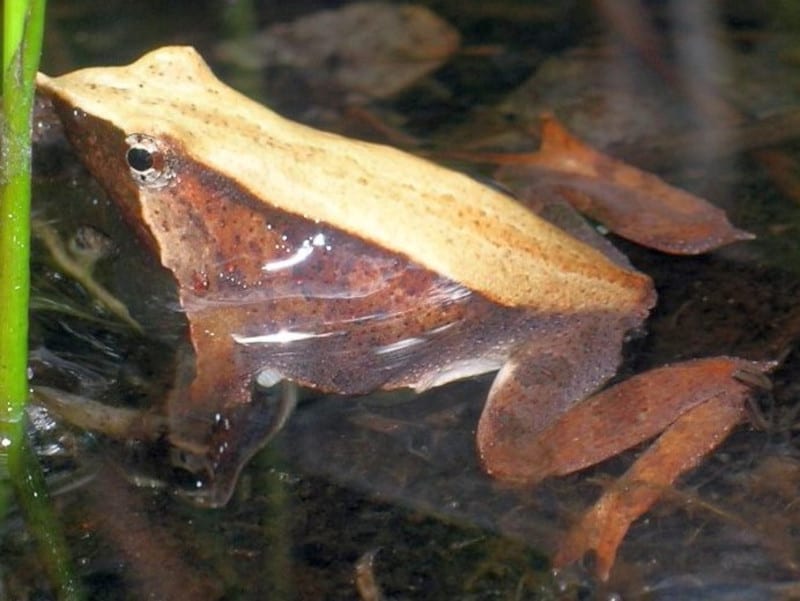
Southern Darwin’s Frog Distribution, Habitat, and Ecology
The fabulous Southern Darwin’s Frog evolved as endemic to a small portion of the world. That region’s also already renowned for its abundance of natural wonders. That’s because this marvel of evolution developed in the area that’s now the continent of South America.
Even there, though, it only appears in a small swathe of the continent. All known sightings of this rare amphibian occurred in the countries of Argentina and Chile. For the moment, no evidence of the unique creature ever appearing outside of that small range exists.
It also displays preferences in its choice of habitat. The vast majority of known individuals live within the boundaries of the Valdivian Temperate Rain Forest. It most often inhabits forested areas and glades. It lives at altitudes up to 3,600 ft (1,100 m) above sea level.
Most frequently it makes its home in a variety of ecosystems. These usually include coarse woody debris, mossy areas, and grasslands. The presence of bushes and small trees appears to augment its survivability. Slow moving streams and bogs also seem to be a favorite.
Intriguingly, the Southern Darwin’s Frog developed a widely varied diet. Due to this, it feeds on a range of small local invertebrate species. Its native habitat provides it with an abundance of prey. Like many related animals, it primarily feeds as an ambush predator.
Subsequent to mating, the females typically lay anywhere from 4 – 10 eggs. Exceptional broods, though, may total as many as 40. Males can usually only brood 5 – 8 tadpoles at a time, however. An average lifespan for this impressive species seems to be 10 – 15 years.
Species Sharing Its Range
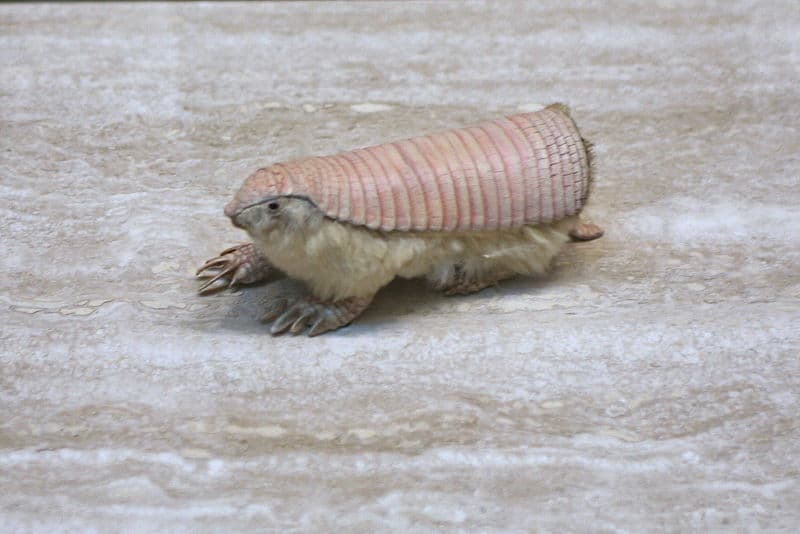
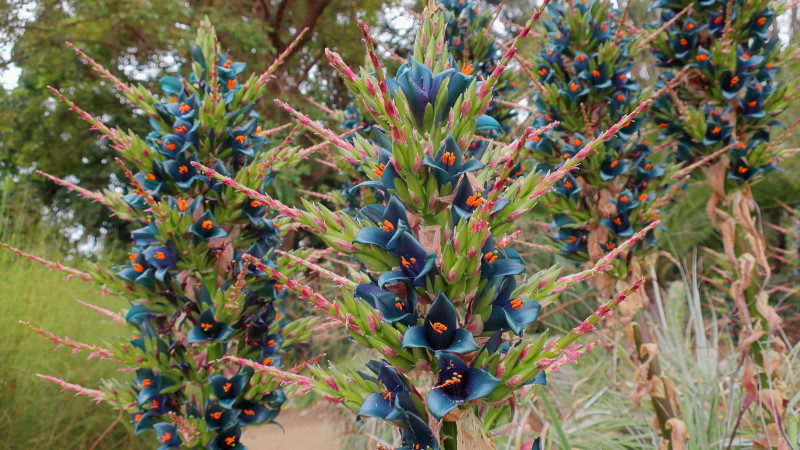

Check out our other articles on 4 Charming Christmas Season Species, Blue Footed Booby, Macquarie Island, Golden Shower Tree, Rough-nosed Horned-lizard, Giant Swallowtail









Leave a Reply